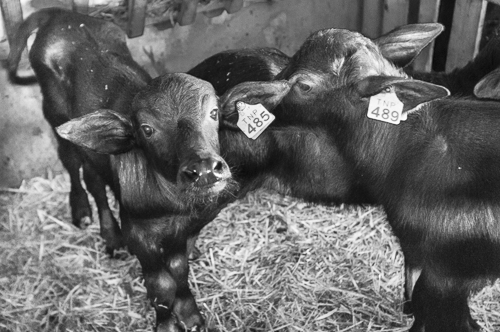The Transylvanian buffalo company was founded in 2005 acquiring properties abandoned by Germans in Romania who left the country in 1990 after the communist regime was toppled.
Originally, Germans were invited to act as a buffer against invasions from the east in the 1200s by a Hungarian king. Forming seven towns, Siebenburgen, and many villages, the descendants of the first Germans, also called Saxons, stayed in Romania more or less ever since. However, the communists treated them badly and most of them couldn’t get out of Romania quickly enough, leaving their houses and maybe even their belongings behind.
The Saxons were avid buffalo farmers reputedly having as many as 100,000 of them in 1990. However, due to their slow growth, less milk production, heavier bones and having less meat than a dairy cow, their numbers diminished quickly after the Saxons left. Since the local farmers mostly didn’t want to raise buffaloes, the Transylvanian buffalo company could easily buy them from local farmers.
The grown-up buffaloes are taken out to pastures next the premises of the company. There, they can take mud baths covering themselves in mud which works as a sort of sunscreen for them.
When we arrived, two groups of buffaloes were being milked at the same time by milking machines, while a large group of buffaloes were standing outside in an enclosure waiting to be milked.
We also visited the calves which were kept inside in small enclosures, 2-3 calves sharing a “room”. Like all buffaloes, they were very curious, whereas dairy cows mainly ignore visitors.
The company also have 7 bulls in order to make new generations of buffaloes. They have to be kept separate because they will start fighting if they meet. We were told that they wanted to let two male calves grow up together in order to accept each other later in life.
We also visited a small dairy in Rupea apparently owned by a sister company called Transylvanian buffalo products. The English-speaking manager, probably a dairy engineer, lived in the same building as the dairy. Due to limited demand, they only worked 2-4 days a week. In fact, we were told to arrive in the afternoon, but when we arrived, the workers were already cleaning the machines having finished the day’s production. The manager told us that he couldn’t foresee when production would take place even the day before.
The dairy produces mozzarella and feta cheese both of them containing much more fat than corresponding cheeses made from milk from dairy cows.
Buffalo milk products have been well known in Romania and has been highly appreciated. They are perceived as healthy, natural and tasty.

